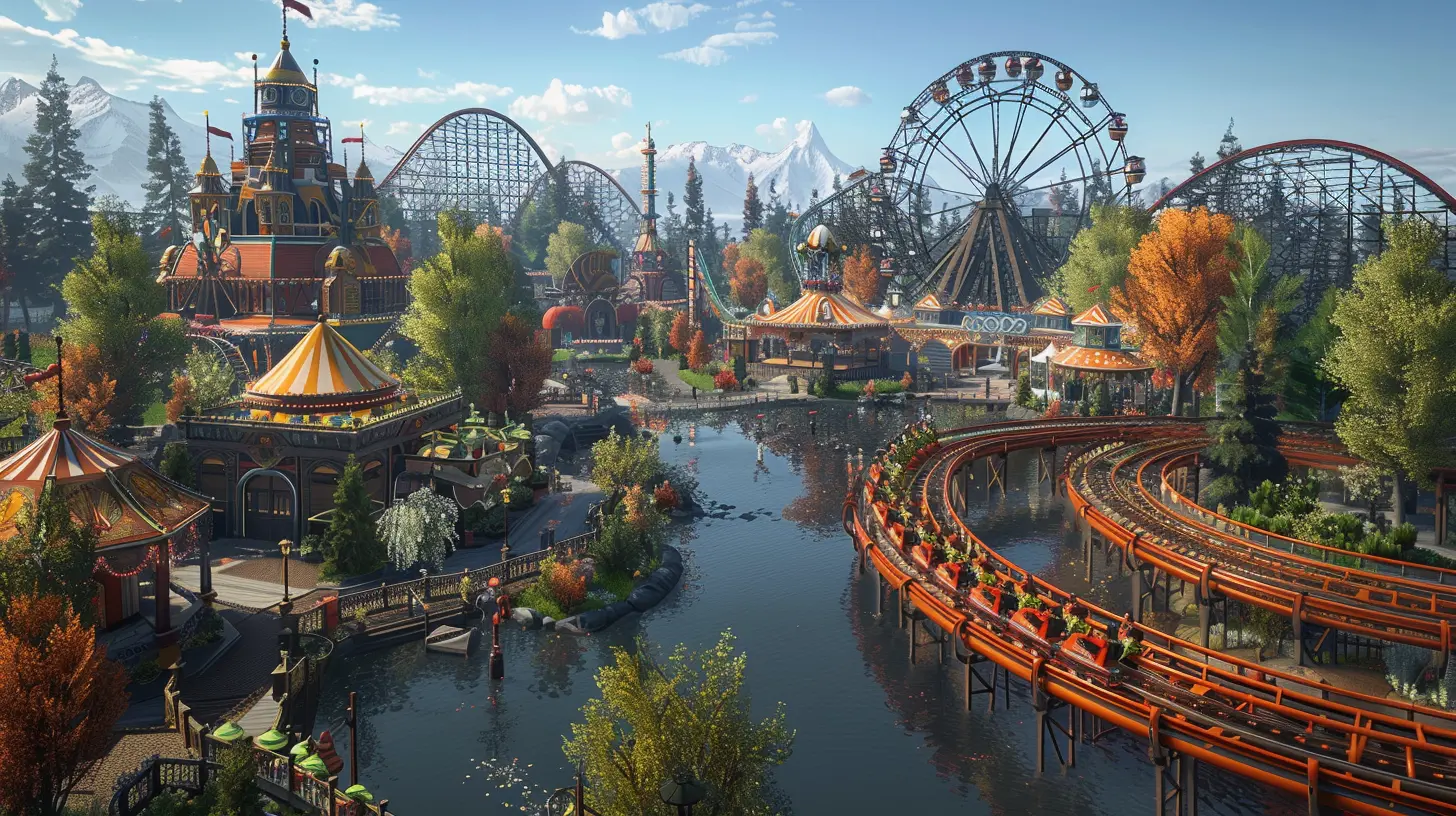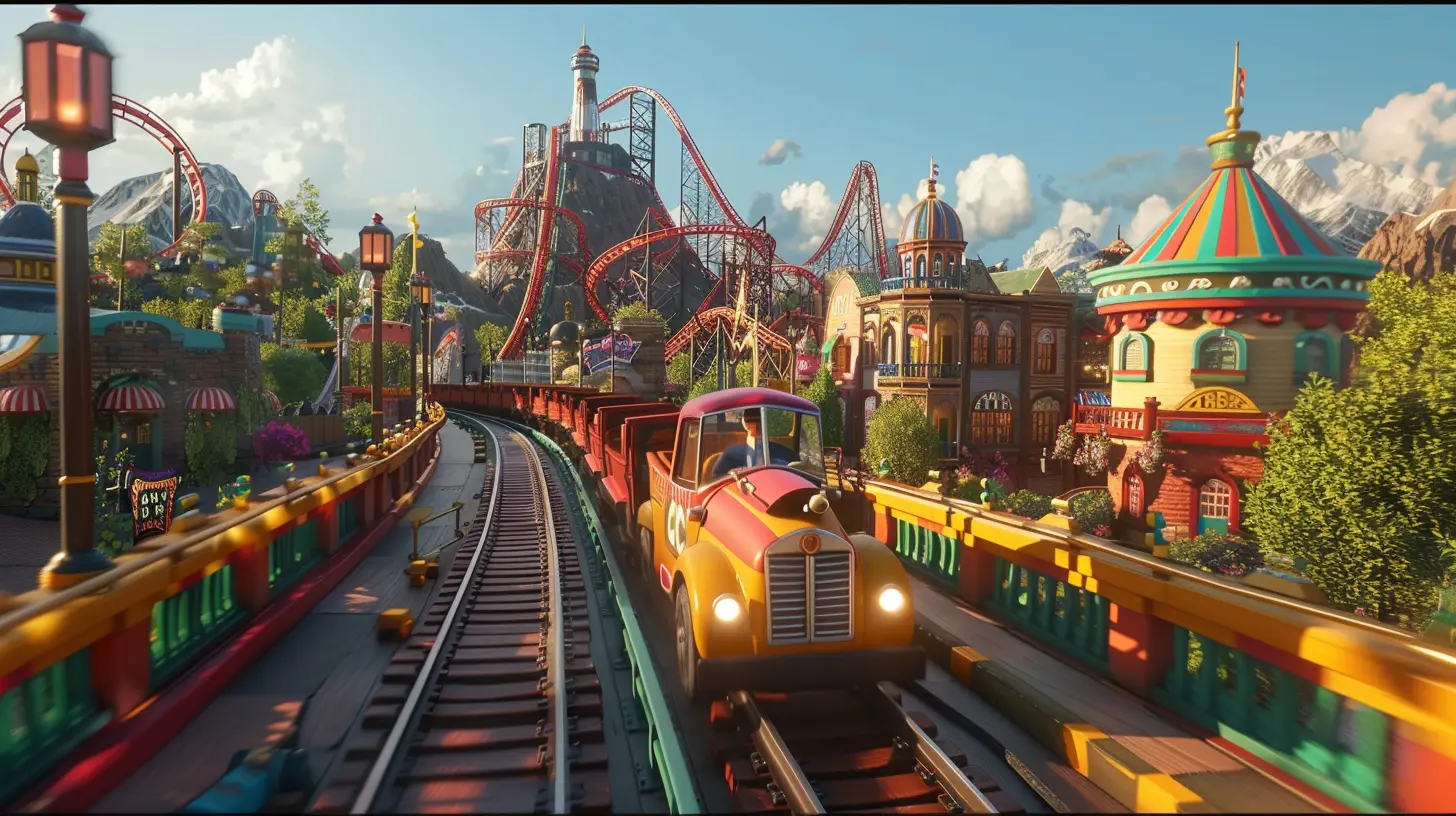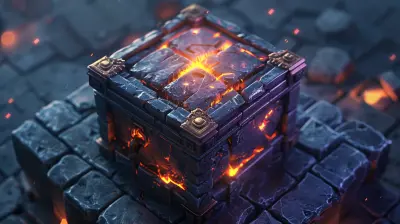11 April 2025
Let’s face it—there’s something ridiculously satisfying about building your own theme park in a simulator. Whether you’re a RollerCoaster Tycoon junkie from way back or a newbie trying your hand at Planet Coaster, there’s a thrill in crafting the ultimate amusement escape. But let’s be honest here—building a park that’s more than just neon rides vomit-inducing queues? That takes skill, patience, and, dare I say, a sprinkle of genius.
Not to worry—I’ve got your back. Let’s dive into the nitty-gritty of planning the perfect park in your favorite theme park simulation game. From layout wizardry, maximizing profits, to keeping your visitors (or "peeps") smiling, this guide will have you building parks so good, even Walt Disney would nod in approval. Ready? Let’s put on that architect cap and get started!
1. Nailing the Layout: A Park That "Flows"
Let’s get real for a second. Your park’s layout is literally its backbone. If you botch it, you’ll have a frustration-filled mess of chaos where visitors are either lost, stuck in mile-long queues, or going home mad without spending their hard-earned cash. Not ideal, right? Right.Start With a Central Hub
Think of your park like a spiderweb. Create a clean, central hub right at the entrance. This is your visitors’ first impression—a place where they can branch out to all the different attractions. If you’re feeling fancy, throw in some eye-catching scenery here to give it that Pinterest-ready vibe.Pathways Matter (So Stop Making Weird Mazes!)
A straight path is boring, but a winding, chaotic layout? That’s just asking for trouble. Strike a balance—curvy paths that loop around key attractions keep the park interesting but avoid unnecessarily long paths that feel like a never-ending hike. Your visitors aren’t down for playing "Lost in the Jungle Cruise," trust me.Zoning Is Your Secret Weapon
Here’s the deal: group similar attractions together. Family rides? Cluster them in one area. Adrenaline-pumping coasters? Group ‘em together somewhere else. Food stalls and bathrooms? Strategically sprinkled throughout like they’re Easter eggs. Why? Because nobody wants to trek across the entire park just to find a chili dog or, ahem, relieve themselves.
2. Rides, Rides, Baby: It’s All About Variety
Yes, it’s called a "theme park," but does your park actually have, you know, a theme? Or are you just slapping together random rides and calling it a day? If the latter sounds like you, it’s time to rethink your strategy.Mix It Up for Maximum Appeal
Let’s break it down: Not everyone is in the mood to scream their lungs out on a coaster that does three barrel rolls. Include a mix of rides—gentle ones for families, medium thrill rides for the casual daredevils, and heart-pounding monstrosities for the adrenaline junkies. Bonus points if you theme them creatively! A spooky haunted house next to an underwater submarine ride? Now you’re talking.Keep It Fresh
Staleness is the silent killer of parks. Even the most loyal visitors will get bored if you’re not innovating. Keep your park alive by regularly adding new rides or upgrading old ones. And, for the love of all things coaster-related, don’t forget seasonal events. A Halloween-themed coaster or a winter wonderland area? Chef’s kiss.
3. Money, Money, Money: Make That Cash Flow
Look, we’re not here to run a charity. Your park needs to make money, and lots of it. After all, how else are you going to fund that shiny new coaster that costs more than a private island?Perfect Pricing: Don’t Be Too Greedy
Ticket prices are a balancing act. Charge too much, and your visitors will turn around faster than a kid who spotted a broccoli stand. Price too low, and you’ll barely scrape by. Pay attention to guest satisfaction and adjust pricing accordingly. Oh, and don’t forget to charge for rides—just don’t gouge them.Shops and Stalls Are Gold Mines
Pro tip: People love buying things, especially when they’re already having fun. Add food stalls, drink carts, and souvenir shops near the busy ride exits. And don’t just stick with generic stuff—hot dogs and hamburgers are fine, but who wouldn’t pay double for themed snacks like dragon-shaped pretzels? Exactly.Staff Woes: Don’t Underpay
I get it—cutting corners on staff wages sounds tempting, but hear me out. Underpaid staff are miserable staff, and miserable staff lead to miserable visitors. Invest in enough employees (janitors, mechanics, entertainers—the whole gang) and treat them well. Your park will thank you.




Zeal McGehee
Great insights! Your tips on balancing aesthetics and functionality in theme park simulators are invaluable. It's always a challenge to create an engaging experience while maximizing space. Looking forward to trying these strategies in my next park!
April 11, 2025 at 3:07 PM